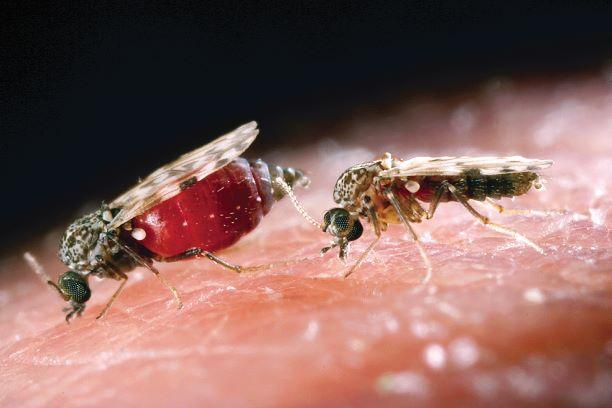The first study to confirm the feeding habits of midges on exotic animals in UK zoos has been published in Parasites and Vectors and could hold important clues to prevent disease outbreaks in Northern Europe.
A team of researchers from The Pirbright Institute, the Zoological Society of London (ZSL) and the London School of Hygiene and Tropical Medicine collected midges from two zoos in the UK; the Zoological Society of London (ZSL) London Zoo and ZSL Whipsnade Zoo. They were able to identify 25 different species of Culicoides midges, six of which are considered to be vectors for bluetongue virus (BTV), Schmallenberg virus (SBV) and African horse sickness virus (AHSV). These viruses are known as arboviruses because they are transmitted by arthropods such as insects and ticks, making them arthropod-borne viruses.
In recent years, exotic arboviruses have emerged in Northern Europe with BTV and SBV outbreaks having a devastating impact on livestock hosts such as cattle, sheep and goats. There have been no outbreaks of AHSV in Northern Europe to date, but it remains a threat to its equine hosts. These diseases also pose a threat to zoo animals across Europe, as antibodies to these viruses have previously been detected in a range of mammals including dogs, lions, black bears and white rhinos. This indicates their potential to infect a wide range of hosts not just primary livestock hosts.
Studying animals in zoos provides an ideal scenario to gather information about the feeding habits of Culicoides midges, as there are a controlled number of potential hosts for the midges to feed on. This allows scientists to accurately determine midge feeding preferences, and estimate the distance midges travel after taking blood meals, information which could prove vital in outbreak scenarios to identify the animals most at risk from disease transmission.
Researchers set up light suction traps in specific locations at each zoo, that use ultraviolet light to attract and collect Culicoides midges. A total of 11,648 Culicoides midges were identified and logged by species over the course of the experiment. Of these, 68 midges had recent blood meals, which were analysed using DNA sequencing to reveal which zoo animals the midges fed on. Sequencing revealed that 71% of these blood meals were from exotic zoo animals, demonstrating the risk of infection through opportunistic feeding behaviour of Culicoides midges.
Dr Marion England of Pirbright's Entomology group commented on the achievements of the study “This work has revealed how adaptable Culicoides biting midges can be, in that they can opportunistically feed on a wide range of available animals and birds. It is important to realise that many zoo animals are as much at risk from contracting vector-borne diseases as domestic livestock and that, to a Culicoides midge, there are no boundaries between the zoo and the natural environment. Therefore, zoo animals may be involved in cycles of transmission during an outbreak of a Culicoides-borne virus and should be considered when planning vaccination and control strategies.”
These results hold promise for modelling possible outcomes of BTV, SBV and AHSV outbreaks. Obtaining more information about the feeding preferences and habits of midges could help to provide crucial predictions during outbreaks, as well as raising important questions about the risk to valuable exotic animals in zoos and the implications for conservation breeding programmes.
This study was funded by the Department for Environment, Food and Rural Affairs (Defra) and funded through the Defra national Culicoides laboratory. This research was also funded through strategic grants BBS/E/I/00007039, BBS/E/I/00007033 and BBS/E/I/00007038 awarded by the Biotechnology and Biological Sciences Research Council, part of UK Research and Innovation (BBSRC UKRI).
